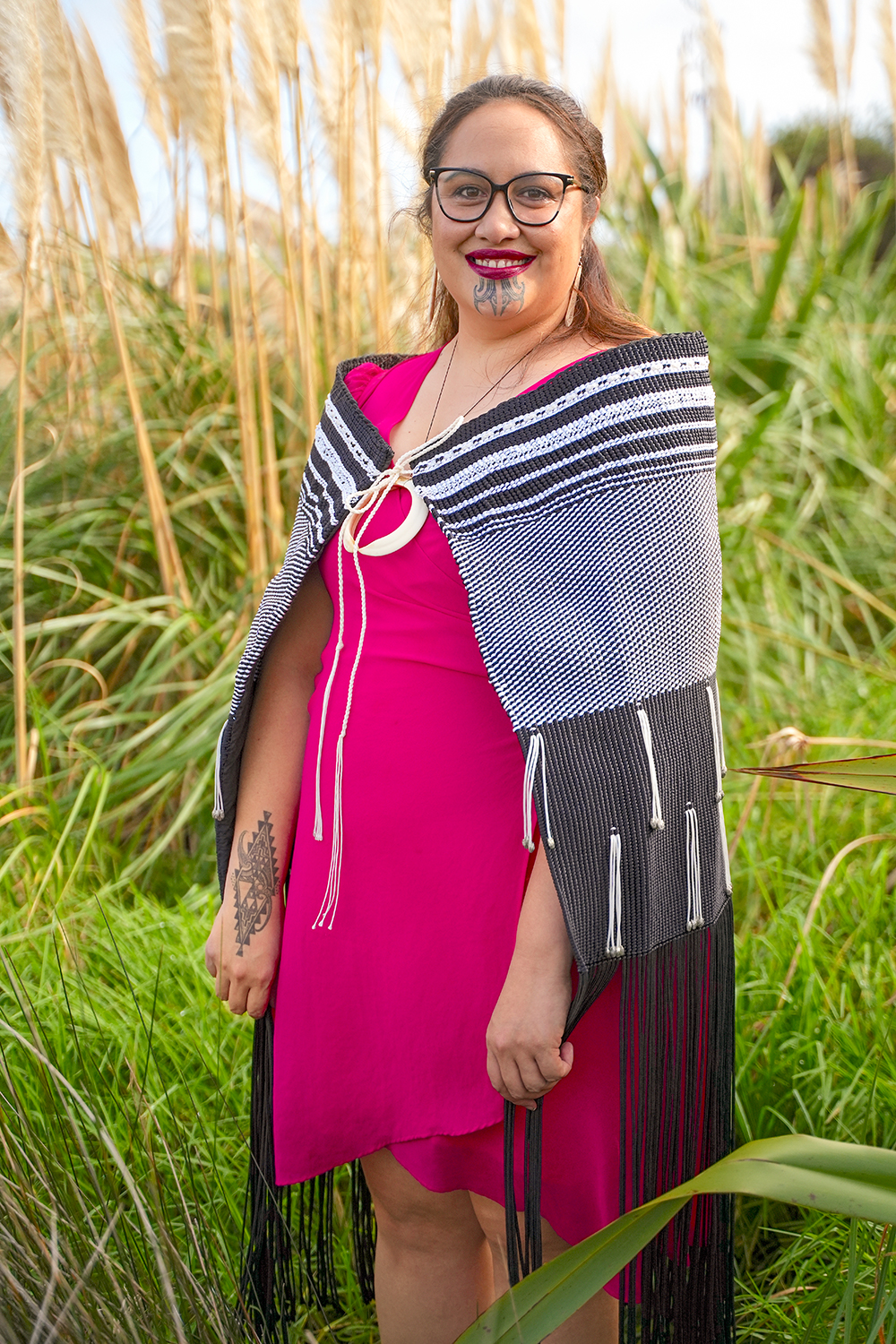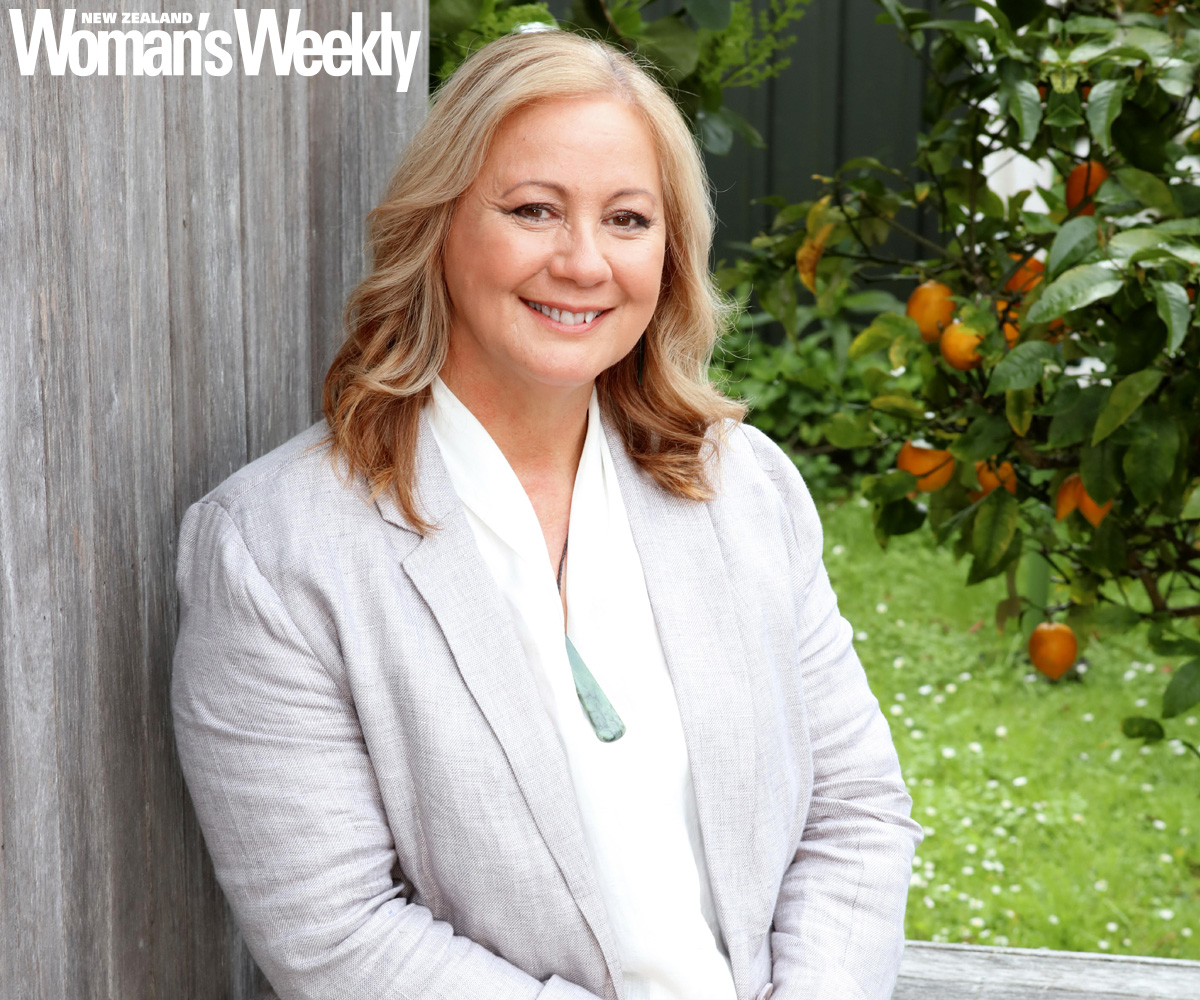As her designs hit the international catwalk for the first time in Toronto, it was much more than a fashion show for weaver Te Ataraiti Waretini. It was also a heart-breaking tribute to her uncle, who unexpectedly passed away while she was on the plane, and her nan, who died during the first level-four lockdown.
Landing in Canada as one of just 26 creators chosen to showcase their work at the Indigenous Fashion Art Festival, Te Ataraiti’s excitement turned to despair after learning her Uncle Hemi had suddenly passed away.
“I wanted to go back to be with the whānau, but we had all worked so hard to get here – including his wife, who was the seamstress, and all of his kids, who were my models and consultant,” shares Te Ataraiti, 35.
Desperately missing home and longing to grieve with her loved ones, she made the hard decision to stay abroad and immediately dedicated the show to her dad’s brother.
“In the middle of me working every day at IFA, my whānau was in the throes of his tangi. I called back often and reassured them that I would do my absolute best in his honour just as they were doing their best in honouring his memory.”
Whānau is everything to the talented, Rotorua-born artist, who spends anywhere from two weeks to a year-plus crafting and weaving each of her pieces.
The traditional Māori skill of raranga or weaving is garnering international attention – one of her korowai (cloaks) is on display at the British Museum and she’s gifted them to multiple celebrities. Learning to weave has also been a deeply meaningful process that has repeatedly helped Te Ataraiti process and grieve.
During the first level-four lockdown, her nan died at a time when restrictions prevented hospital visitors. Just after this life-changing loss, Te Ataraiti began work on Whanaungatanga, the show-stopping black-and-white cloak she recently showcased in Canada. Its name is a reference to kinship and family connection.
“Whanaungatanga brought a lot of healing for our whānau to talk through everything, to feel everything,” tells Te Ataraiti, who worked on the cloak for more than a year with the help of her mum and aunty. “It’s the representation of our whānau coming together during hard times, our own tears and eventually the freedom to be ourselves again.”
Her talent is undeniable, but what makes it even more remarkable is that Te Ataraiti learned the time-honoured skill from her mum over video calls while she was living in London and feeling homesick five years ago.

Mum Maria taught her daughter the skills of her craft.
Her mum Maria is an experienced weaver, who worked during Te Ataraiti’s childhood at Rotorua’s Māori Arts and Crafts Institute. It took some convincing, though, for her to agree to Te Ataraiti’s request. Weaving is incredibly complex work involving many layers of skill and tikanga, which Maria initially believed were too challenging to teach from so far away.
Eventually, she relented, and over four months, and many phone calls, she taught Te Ataraiti to weave a pākē, a type of short cloak.
“Mum would send pictures explaining what to wear, what knife to use, when to karakia [pray]. I had to learn everything – the harvesting, prepping, boiling, drying and weaving,” recalls Te Ataraiti, who also runs TV production company Kura Productions.
“The thing I loved most was learning about the energy you put into your mahi [work]. You only weave when you’re feeling well with positive thoughts and not when you’re angry or sad because whoever wears or uses it is going to feel that energy. Now I use that practice almost every day with all of my mahi.”
While Te Ataraiti insists there are many weavers, including her mum, who are more accomplished than she is, her pieces have been celebrated and worn by many.
“When I met [musician] Lauryn Hill and gave her a piece of my weaving, it was like she was looking into my soul and really listening. She wore the cloak for the rest of the night and was so appreciative of it.”

As well as whānau, celebrities have worn the weaver’s designs.
These days, between running Kura Productions and her weaving workload, there’s rarely a spare moment. “It is a bit of a juggle,” she admits. “There was a time when I slept like 18 hours over five days because I had a few deadlines for weaving and TV.”
But Te Ataraiti, who was raised speaking te reo Māori and attended kura kaupapa (Māori language immersion school), knows it’s all worth it to pursue her passions.
“Learning to weave was a really beautiful way to stay connected to my culture. I never felt more myself or found myself more than when I started weaving,” she shares.
“I’m really grateful Mum has those skills and taught me. Through raranga, I feel the strongest possible and no one can penetrate that space for my whānau because with weaving, we are the storytellers.”


.jpg)